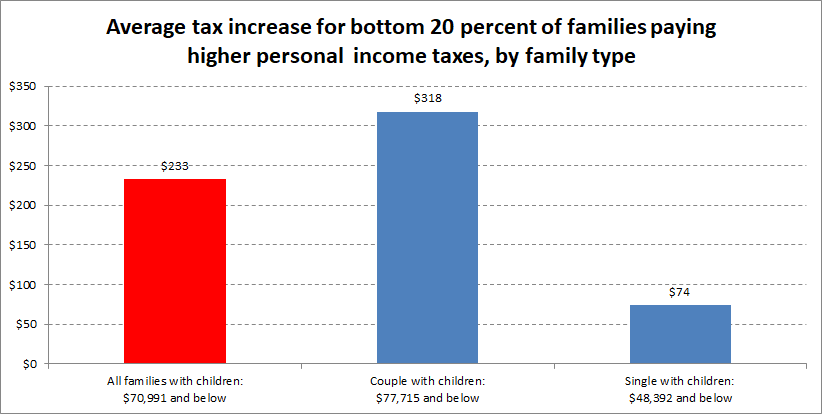Federal government contradicts own objectives by raising taxes on lower-income families

In recent years, the Trudeau government has implemented several policies intended to help Canadian families with children, at times stressing lower-income households. One of the more prominent changes was reducing the second lowest personal income tax rate in an attempt to leave more money in the pockets of families.
Despite their intentions, however, a number of other tax changes have resulted in many lower-income families now pay more income taxes than they did in 2015.
So what happened?
In 2015, the government reduced the second-lowest personal income tax rate in an attempt to leave more money in the pockets of families. But at the same time, it also eliminated several tax credits including income splitting for couples with children, the public transit tax credit, the children’s fitness tax credit, and many others. Crucially, by eliminating these tax credits, the government increased the tax burden on the bottom 20 per cent of income earners with kids (that is, couples with children and single parents with incomes below $70,991 in 2019) and more than offset the tax rate reduction’s limited benefits to this group of Canadians.
Again, after accounting for all the tax changes, a recent study found that 60 per cent of these low-income families with children now pay higher income taxes than they did in 2015.
Notably, these changes adversely affect lower-income couples with children far more than single Canadians with children. Specifically, 75 per cent of couples with children in the bottom 20 per cent (household incomes below $77,715 in 2019) paid higher federal personal income taxes in 2019 than they did in 2015 due to the tax changes. In contrast, only 31 per cent of single Canadians with children in that same earning group (household income below $48,392 in 2019) paid higher income taxes in 2019. Why? Mainly because the government eliminated the tax credit for income splitting, which doesn’t apply to single individuals.

On average, couples with children in the bottom 20 per cent—who now pay higher income taxes due to the changes—pay $318 per year more than they did previously. This is higher than the average increase for all families with children ($233). Eliminating income splitting is the main driver of the average tax increase for couples with children, which amounts to an average of $296 in higher personal income taxes for these families. The elimination of the other tax credits has a smaller effect, but still amounts to a $71 tax increase. While couples with children in the bottom 20 per cent of income earners receive a small average benefit of $33 from the income tax rate reduction, it’s more than offset by the related income tax increases. Clearly, lower-income couples with children are disproportionately affected by the Trudeau government’s tax changes.

Finally, the tax rate reduction largely did not benefit single parents with children in the bottom 20 per cent. Nor were they affected by the elimination of income splitting since they do not have spouses. They do, however, pay higher federal personal income taxes because of the $75 worth (on average) of defunct tax credits they previously claimed.
Despite good intentions, the federal government has harmed, rather than helped, many low-income families in Canada by increasing the taxes they pay. Couples with children in the bottom 20 per cent of income earners are among the most adversely affected by the federal tax changes—a fact incongruous with the stated objectives of the Trudeau government.
Authors:
Subscribe to the Fraser Institute
Get the latest news from the Fraser Institute on the latest research studies, news and events.

